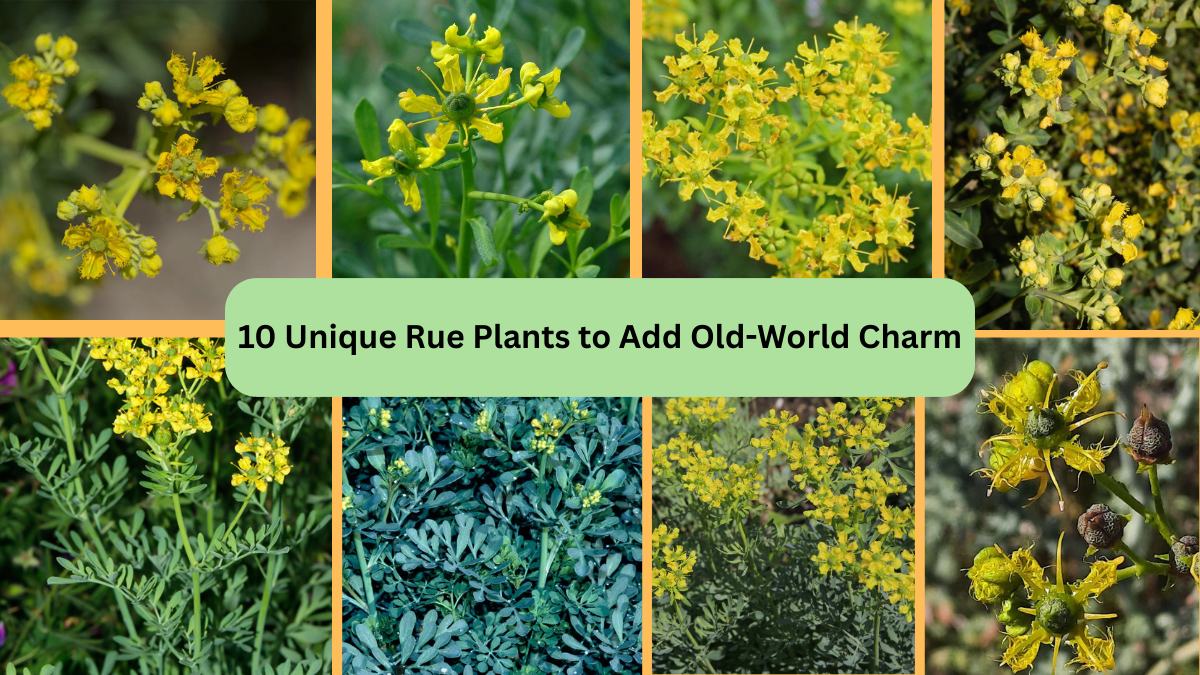Rue, known for its delicate, fern-like leaves and ancient medicinal folklore, has long been a staple in traditional herb gardens and cottage landscapes. Once believed to ward off evil spirits and cure ailments, this charming, old-world herb still finds its place in modern gardens for its ornamental appeal, drought tolerance, and pollinator-friendly flowers. From classic varieties to rare cultivars, Rue brings a touch of history and mystique to any green space.
Here are 10 unique Rue plants you can grow to evoke timeless beauty and old-world charm in your garden.
1. Common Rue (Ruta graveolens)
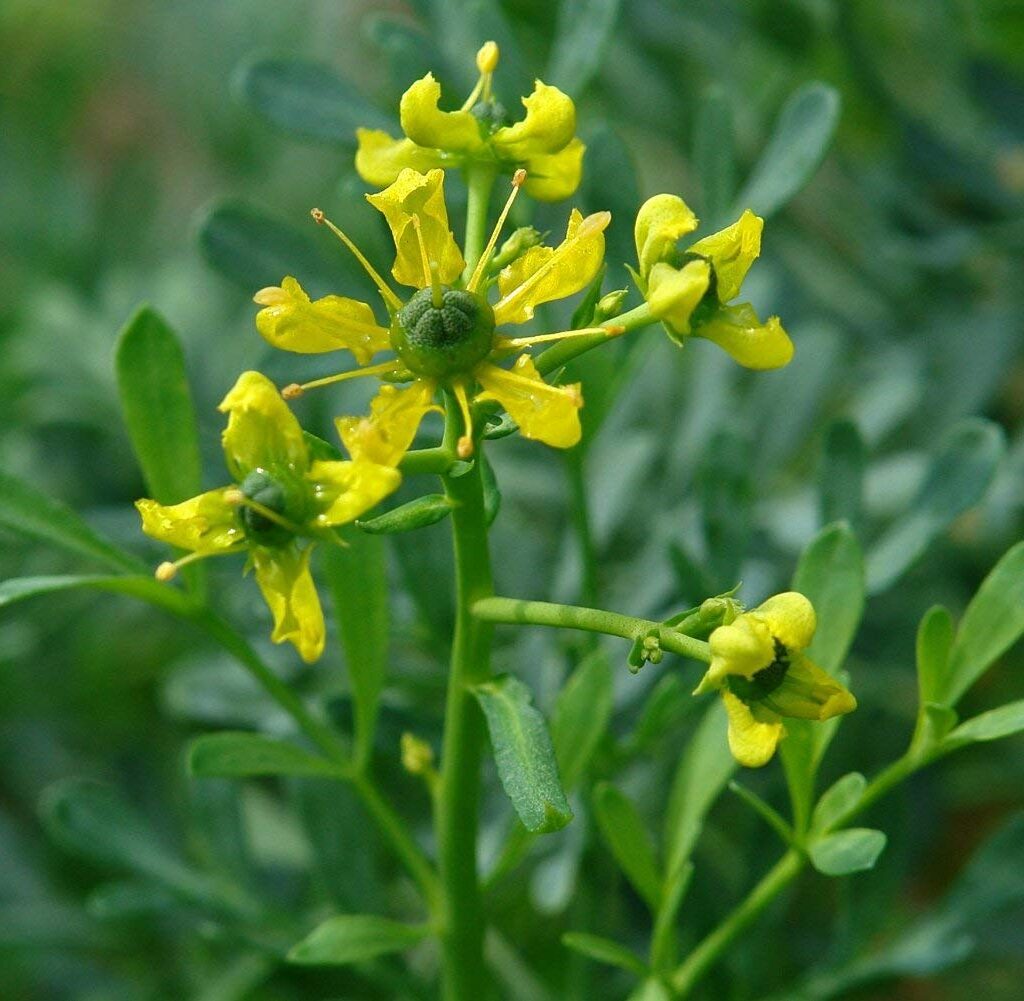
The most widely known variety, Common Rue is an evergreen shrub with finely divided, bluish-green foliage and clusters of small yellow flowers. Valued historically for its medicinal properties and culinary uses (though sparingly due to its potent nature), it was once a fixture in medieval monastery gardens. In modern landscapes, it serves as a low-maintenance ornamental plant, deterring pests like aphids and cats. Its lacy foliage and charming blooms add texture and classic appeal to herb gardens and perennial borders.
2. Fringed Rue (Ruta chalepensis)

Fringed Rue, sometimes called Egyptian Rue, offers a more exotic feel with deeply lobed, fringed foliage and bright yellow, four-petaled flowers that bloom in late spring and summer. Native to the Mediterranean, it thrives in hot, dry conditions and well-drained soil. Historically used in religious rituals and herbal remedies, this variety brings a sense of ancient mystery to the garden. Its distinctive, aromatic leaves and delicate appearance make it perfect for rock gardens or sunny herb patches.
3. Jackman’s Blue Rue (Ruta graveolens ‘Jackman’s Blue’)
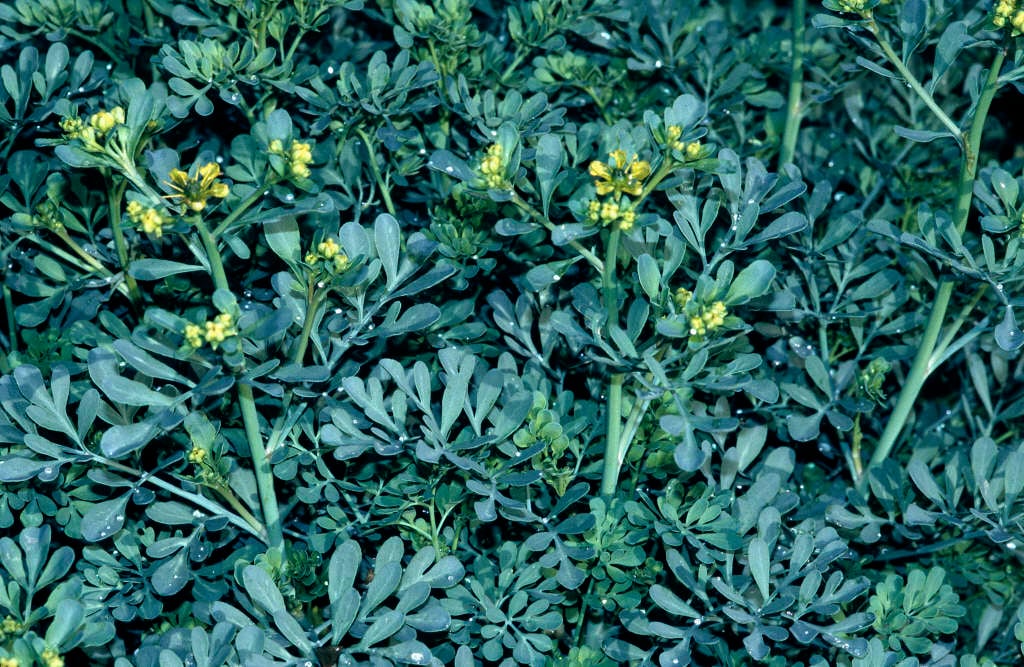
This cultivated variety is cherished for its silvery-blue foliage that adds a cool, ethereal quality to garden borders. Jackman’s Blue Rue grows as a compact shrub, typically reaching about 18-24 inches in height. It features bright yellow flowers in summer and is often used for edging paths or as a backdrop in herbaceous borders. Its unique foliage pairs beautifully with purple or pink flowering perennials, creating a sophisticated, old-fashioned look in cottage and Mediterranean-style gardens.
4. Wild Rue (Peganum harmala)
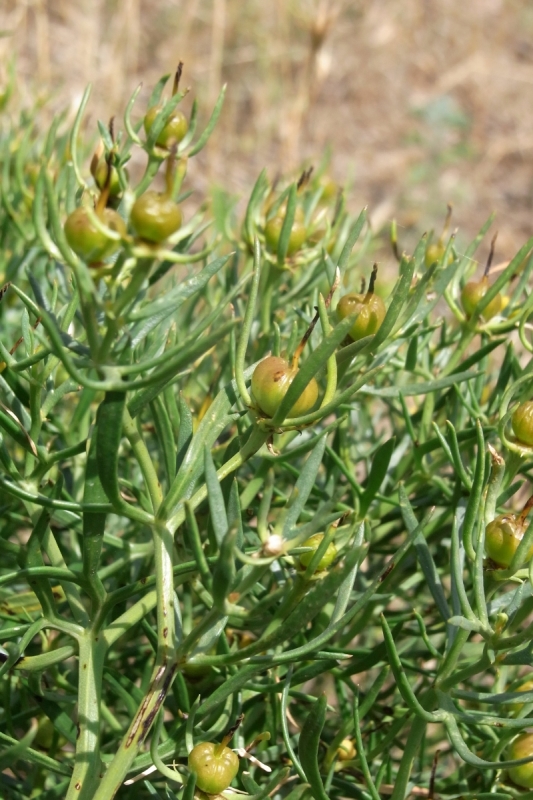
Often mistaken for traditional Rue due to its common name, Wild Rue belongs to a different plant family but shares the same folklore-rich history. Native to Central Asia and the Middle East, this drought-tolerant plant produces attractive white flowers and seed pods used in cultural rituals and herbal medicine. Wild Rue is known for its resilience and ability to thrive in poor, sandy soils. It brings an exotic, mystical quality to arid landscapes and historical herb gardens.
5. Rue Graveolens ‘Variegata’ (Variegated Rue)
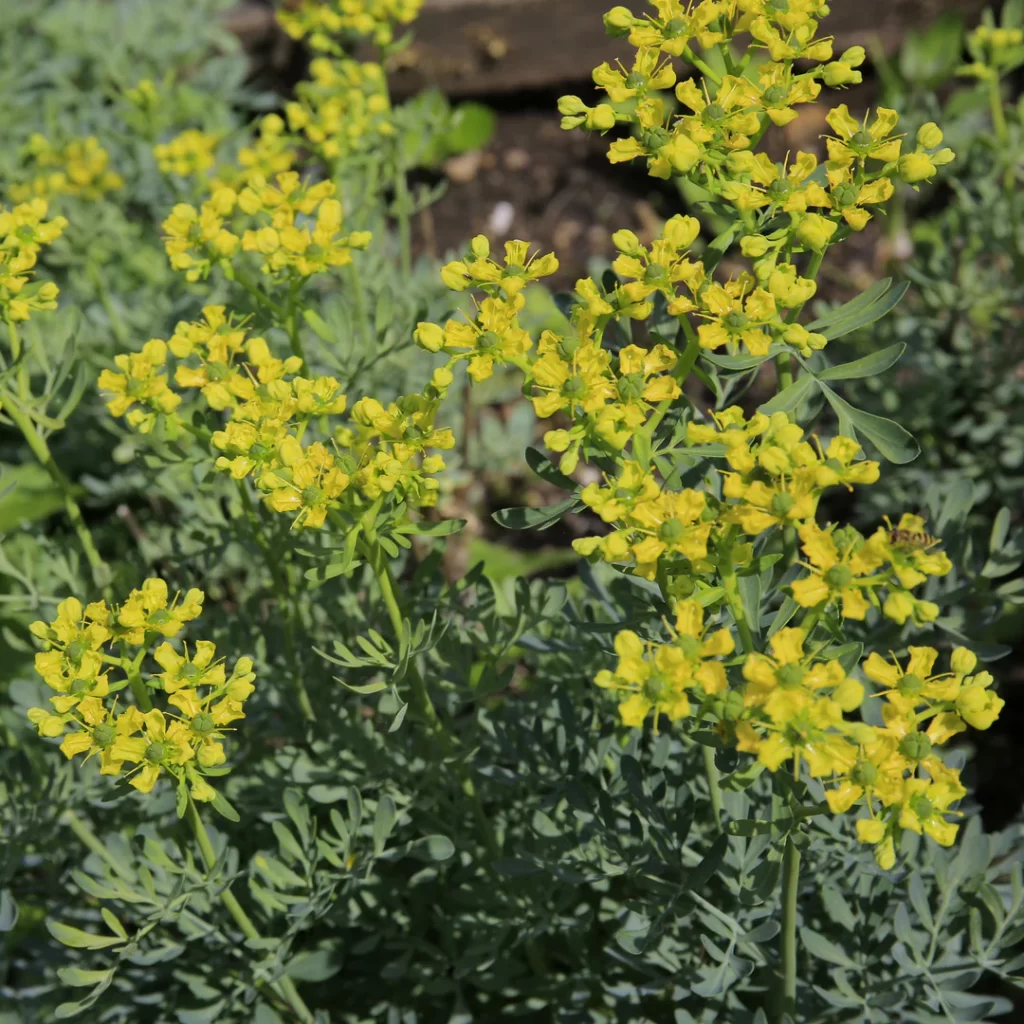
For gardeners seeking a bit more flair, Variegated Rue offers striking foliage marked with creamy white and green variegation. Its delicate leaves and small yellow flowers give it an airy, whimsical presence in garden beds. Best suited to sunny, well-drained spots, it’s a natural pest repellent and adds year-round interest with its evergreen foliage. The variegation makes it especially useful for brightening dark corners or adding contrast to mixed perennial borders.
6. Ruta Corsica (Corsican Rue)
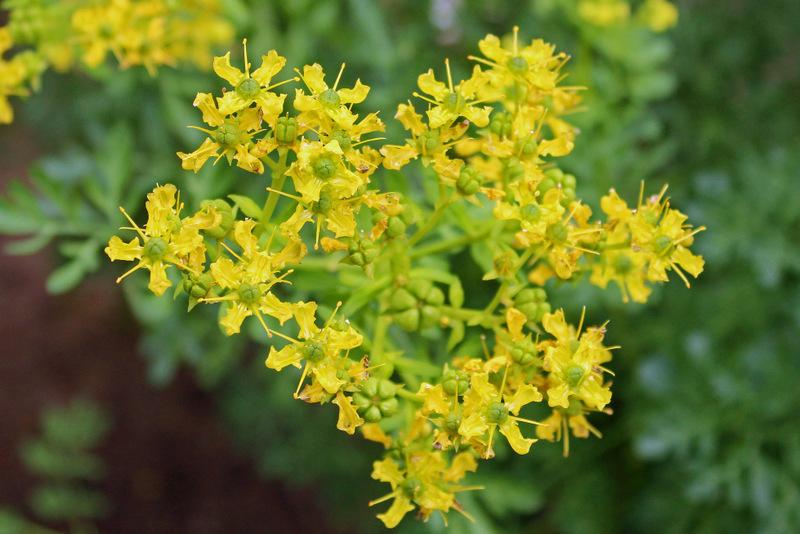
Native to the Mediterranean island of Corsica, Ruta Corsica is a compact, slow-growing species with finely cut, aromatic leaves and bright yellow flowers in summer. Its small size makes it ideal for container gardens, rockeries, or edging sunny pathways. The plant’s low, mounding habit and drought tolerance make it a practical and visually appealing choice for Mediterranean-style landscapes. Corsican Rue’s understated beauty pairs wonderfully with lavender, rosemary, and other sun-loving herbs.
7. Ruta montana (Mountain Rue)
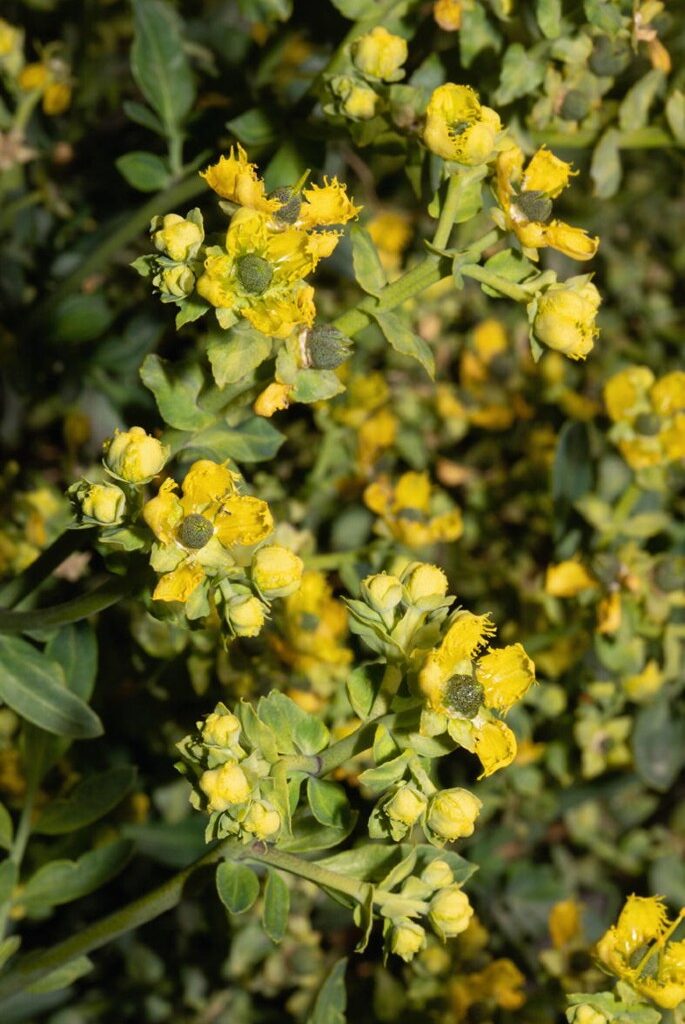
Mountain Rue thrives in higher altitudes and rocky, well-drained soils, making it a hardy, adaptable addition to herb gardens. Its bluish-green foliage and bright yellow blooms provide delicate color and texture, while its historical use as a medicinal herb ties it to ancient healing practices. Mountain Rue is perfect for wildflower meadows, cottage gardens, or naturalistic plantings where it can weave among native perennials and attract pollinators like bees and butterflies.
8. Ruta angustifolia (Narrow-Leaved Rue)

As its name suggests, Narrow-Leaved Rue features slender, elongated leaflets, giving it a more refined, delicate appearance compared to broader-leafed varieties. Native to parts of Europe and North Africa, it produces cheerful yellow flowers in summer and thrives in full sun with well-drained soil. Its upright, airy growth habit makes it a versatile filler for mixed borders or a classic addition to herb gardens seeking a touch of old-world elegance and historical depth.
9. Ruta divaricata (Spreading Rue)

Less common in cultivation, Spreading Rue is known for its open, sprawling growth habit and finely divided, aromatic leaves. It produces the signature yellow Rue flowers that attract beneficial insects and pollinators. Its relaxed, naturalistic form makes it perfect for wild, informal gardens or as ground cover in rocky, sun-drenched spots. This variety thrives with little care, offering gardeners a touch of rustic charm and a connection to ancient gardening traditions.
10. Ruta pinnata (Canary Island Rue)
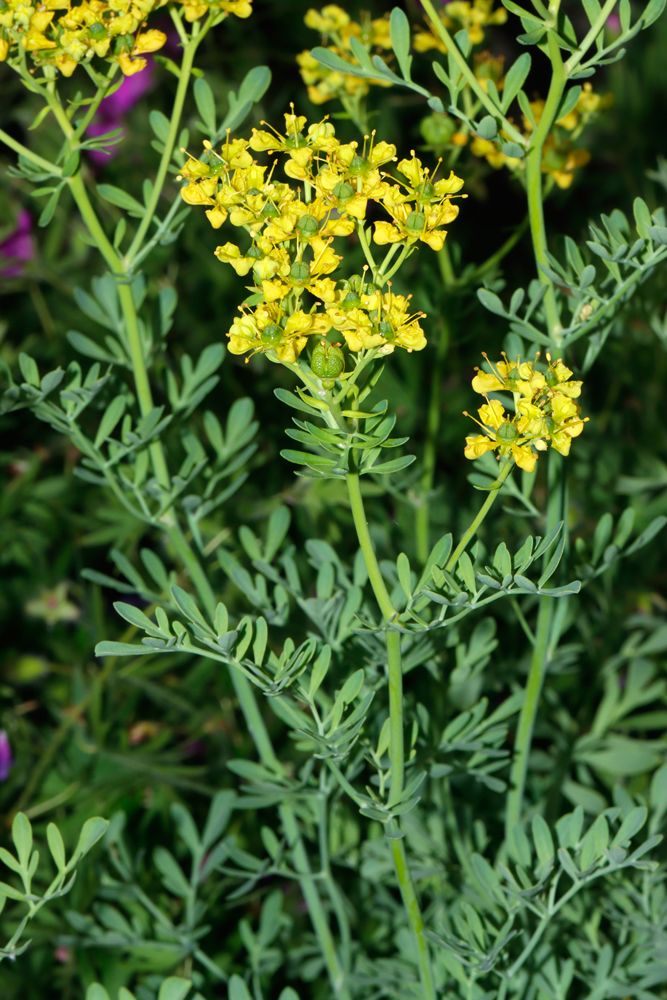
Native to the Canary Islands, Ruta pinnata stands out with its upright growth, deeply pinnate leaves, and bright yellow flower clusters. It’s more tolerant of coastal conditions and poor soils than other Rue varieties, making it an excellent choice for dry, Mediterranean-style gardens. Historically used in folk medicine and spiritual rituals, it’s both ornamental and culturally significant. This distinctive plant adds texture, fragrance, and old-world character to sunny garden spots and raised beds.
